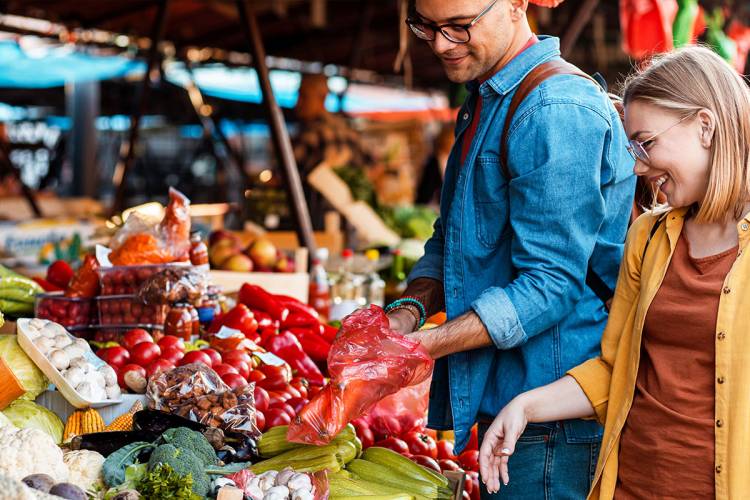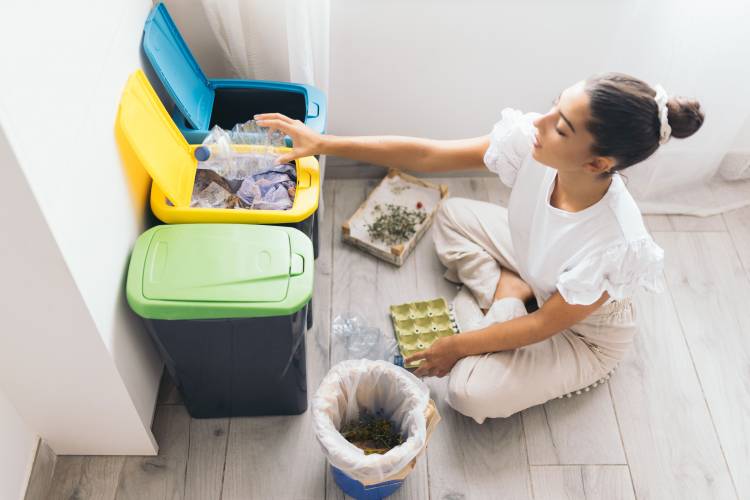Reduce your ecological footprint when shopping
There are benefits to reducing the impact of our shopping on the environment, both for the environment and for ourselves. We give you some tips for reducing your footprint!
IT’S ECO, IT’S LOGICAL
Share

The term ecological footprint was coined in 1996 by Mathis Wackernagel and William Rees and is an indicator or measure of the impact of human activities on nature. What can we do in our daily lives to reduce this? Below, we explain how to make our shopping have “the smallest possible footprint”. Every big change begins with small steps.
How to reduce your ecological footprint when shopping
- Alternatives to the car: when you go shopping, use public transport, walk or cycle to help reduce air pollution and, at the same time, stay in shape.
- Think before you buy: responsible consumption is the first step in reducing our ecological footprint. Think about what you need before you buy it.
- Recycle everything you consume: make the most of each food to avoid food waste and, before throwing something away, think about whether it has a secondary use if you donate it or give it to someone.
- Choose eco-designs: choose furniture and decorative objects that use recycled wood, cardboard, plants, etc. in their manufacture.
- Check the label: check if the clothing was made with recycled materials and if it has certification for the treatment of waste water during its manufacture.
- Avoid dyes in clothing: alkylphenols, heavy metals or phthales are harmful to the environment.
- Choose fair trade businesses that guarantee their products are made ethically in relation to local populations and nature.
- Choose local products as, by doing so, you will reduce the CO2 emissions required for their transport.
- Save energy: if you need to buy lightbulbs, choose low energy LEDs. When choosing white goods, choose those with ratings of C or higher.
Advice for reducing your footprint at the supermarket
- Buying local foods, which have 0 km and are seasonal:
- Avoids mid- to long-distance transportation.
- Uses less packaging: by not having to travel so many kilometres, less packaging is required for its protection of preservation.
- More flavour: foods will have more flavour as they will be harvested at their optimum ripeness.
- Price: as they are seasonal, there is a greater offer in the market.
- Keep the origin and method of production in mind. This information appears on the label. Consume organically produced foods that use fewer insecticides and fertilisers (or none) during their production.
- To save on packaging, buy products in larger packs if you are able to consume them.
- Always look for a way of reusing products that you have bought, such as bottles and tins, in order to give them a second life and, as a last resort, recycle them appropriately.
- Value sustainability actions taken by brands: such as the use of sustainable packaging, organic products and other actions that care for the environment. The more consumers buy products developed with sustainable strategies, the greater the number of companies that will want to do the same.
- Recycle all packaging correctly: separating waste will give a second lease of life to objects that no longer have a specific use.

How do we contribute to the environment?
- By reducing CO2 emissions.
- By saving energy and raw materials for the production of products and packaging.
- By reducing air pollution, which affects the health of millions of people throughout the world.
- By optimising agricultural resources and reducing nitrate pollution in aquifers.
What benefits do we gain as consumers?
- We save on fuel by using the car less and using public transport more.
- We promote the local economy: if we buy products in local businesses we invest more in the area, creating wealth and employment within the community.
- We save money on our shopping basket.
- We contribute to leaving the planet less polluted for future generations.






